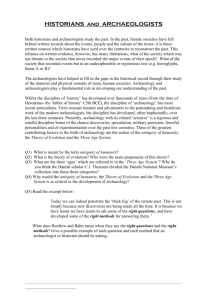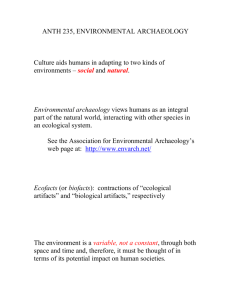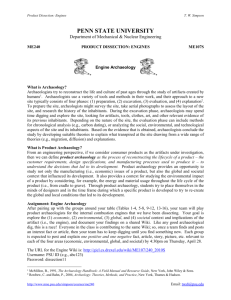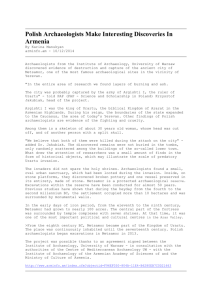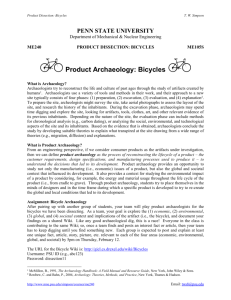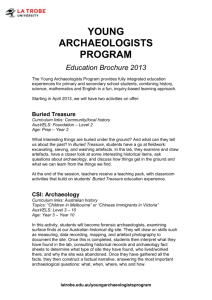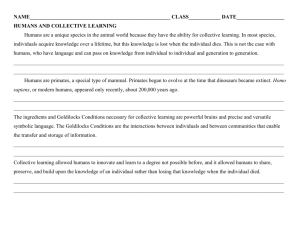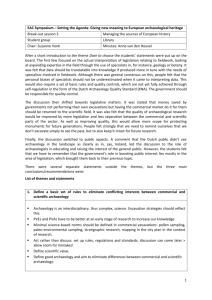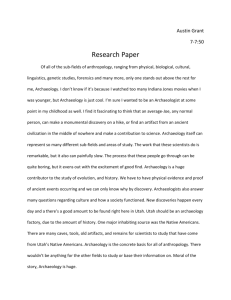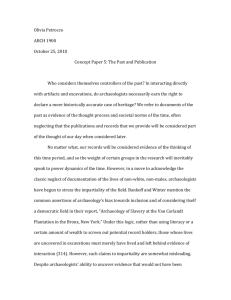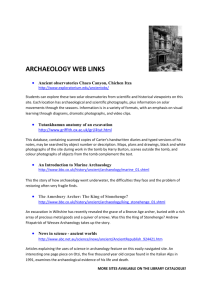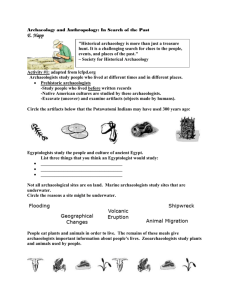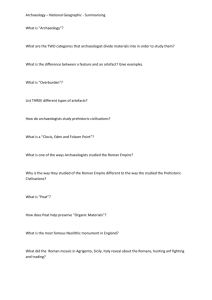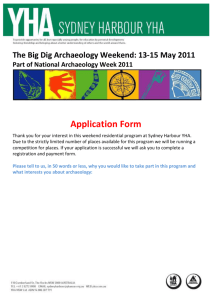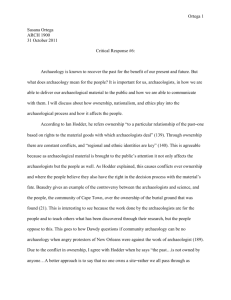ANTH& 204 - Big Bend Community College
advertisement
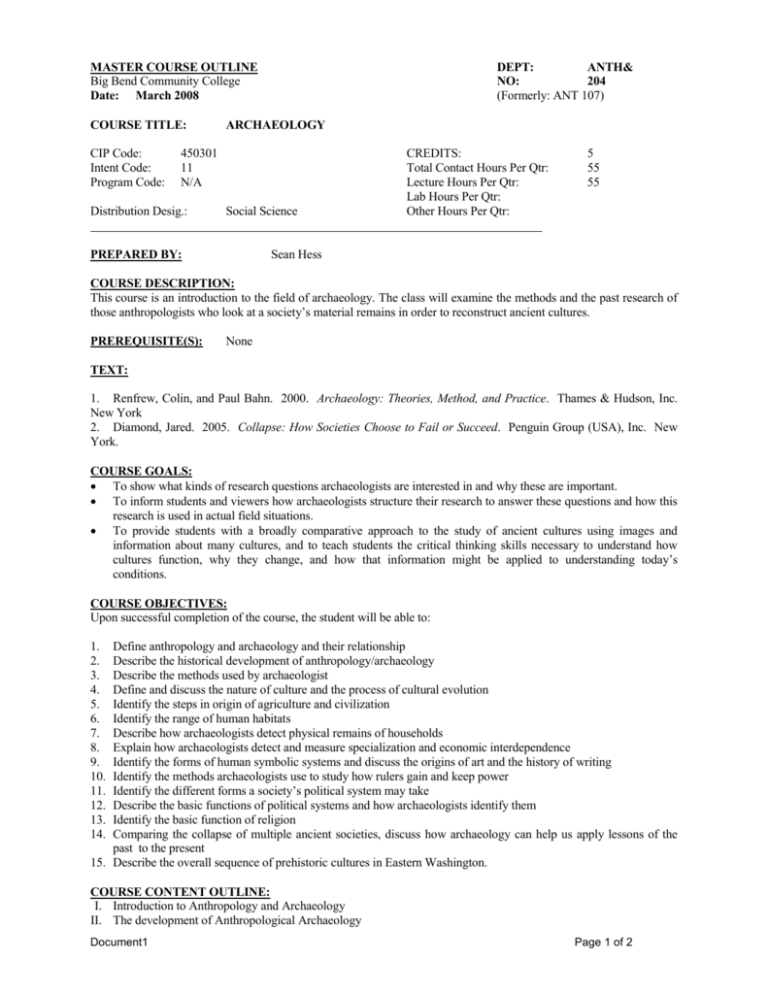
MASTER COURSE OUTLINE Big Bend Community College Date: March 2008 COURSE TITLE: CIP Code: Intent Code: Program Code: DEPT: ANTH& NO: 204 (Formerly: ANT 107) ARCHAEOLOGY 450301 11 N/A Distribution Desig.: Social Science PREPARED BY: CREDITS: Total Contact Hours Per Qtr: Lecture Hours Per Qtr: Lab Hours Per Qtr: Other Hours Per Qtr: 5 55 55 Sean Hess COURSE DESCRIPTION: This course is an introduction to the field of archaeology. The class will examine the methods and the past research of those anthropologists who look at a society’s material remains in order to reconstruct ancient cultures. PREREQUISITE(S): None TEXT: 1. Renfrew, Colin, and Paul Bahn. 2000. Archaeology: Theories, Method, and Practice. Thames & Hudson, Inc. New York 2. Diamond, Jared. 2005. Collapse: How Societies Choose to Fail or Succeed. Penguin Group (USA), Inc. New York. COURSE GOALS: To show what kinds of research questions archaeologists are interested in and why these are important. To inform students and viewers how archaeologists structure their research to answer these questions and how this research is used in actual field situations. To provide students with a broadly comparative approach to the study of ancient cultures using images and information about many cultures, and to teach students the critical thinking skills necessary to understand how cultures function, why they change, and how that information might be applied to understanding today’s conditions. COURSE OBJECTIVES: Upon successful completion of the course, the student will be able to: 1. 2. 3. 4. 5. 6. 7. 8. 9. 10. 11. 12. 13. 14. Define anthropology and archaeology and their relationship Describe the historical development of anthropology/archaeology Describe the methods used by archaeologist Define and discuss the nature of culture and the process of cultural evolution Identify the steps in origin of agriculture and civilization Identify the range of human habitats Describe how archaeologists detect physical remains of households Explain how archaeologists detect and measure specialization and economic interdependence Identify the forms of human symbolic systems and discuss the origins of art and the history of writing Identify the methods archaeologists use to study how rulers gain and keep power Identify the different forms a society’s political system may take Describe the basic functions of political systems and how archaeologists identify them Identify the basic function of religion Comparing the collapse of multiple ancient societies, discuss how archaeology can help us apply lessons of the past to the present 15. Describe the overall sequence of prehistoric cultures in Eastern Washington. COURSE CONTENT OUTLINE: I. Introduction to Anthropology and Archaeology II. The development of Anthropological Archaeology Document1 Page 1 of 2 III. IV. V. VI. VII. VIII. IX. X. XI. XII. XIII. Archaeological Methods The Concept of Culture and Cultural Evolution Identifying Family Households and Their Functions Identifying Occupational Specialization and Economic Patterns Development of Human Symbolic Systems in Art and Writing Political Systems and Identifying Sources of Power Trade, Alliances and War Religion and Its Functions The Fall of Civilizations Prehistory and Early History of Eastern Washington Cultural Resources Management and Current Archaeology EVALUATION METHODS/GRADING PROCEDURES: Student evaluation will be based on individual performance on examinations/quizzes, written reports, and class participation. PLANNED TEACHING METHODS/LEARNING STRATEGIES: X Lecture Laboratory Supervised Clinical X Small Group Discussion Audiovisual Individualized Instruction Special Project Other (List) Telecourse Division Chair Approval Document1 Page 2 of 2


